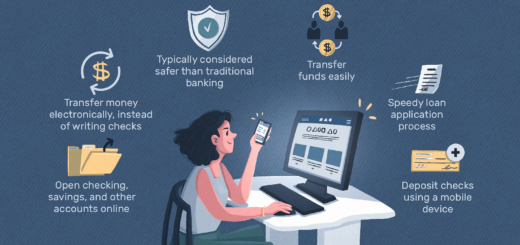The Complete Guide to Starting a Blog with Bluehost
Building Your Blogging Empire: The Ultimate Guide to Launching a Successful Blog with Bluehost
Introduction
Blogging has become an incredibly popular way for people to share their thoughts and ideas with the world. It allows individuals to express themselves, build a following, and even make money online.
A blog is essentially a website that features regular articles or posts written in an informal tone. These articles usually cover topics related to the writer’s interests or areas of expertise.
Starting a blog can be an exciting and rewarding experience. It provides you with a platform to showcase your writing skills, engage with readers, and build your personal brand.
Moreover, it can open doors for career opportunities in fields such as freelance writing and content marketing. When it comes to creating a successful blog, choosing the right hosting platform is crucial.
Bluehost is one of the most popular hosting platforms available today due to its affordability, ease of use, and reliability. In this guide, we’ll walk you through everything you need to know about starting a blog with Bluehost- from selecting your domain name all the way through monetizing your content!
Choosing a Domain Name
Choosing a domain name is one of the most important steps when starting a blog. It’s essentially your blog’s identity and it needs to be memorable, easy to spell and relevant to your content. Ideally, you want your domain name to reflect your brand or niche so that visitors can easily find you online.
Importance of choosing the right domain name
The right domain name can make or break your blog’s success. If it’s too difficult to remember or spell, people won’t even bother trying to find you online.
That means fewer visitors, less engagement, and less revenue potential for you. By choosing the right domain name that is easy to remember and reflects what your blog is about, you’ll increase your chances of attracting more traffic and building a loyal audience.
Tips for selecting an effective domain name
To select an effective domain name, start by brainstorming a list of keywords related to your niche. Consider using descriptive words that are easy to remember and spell such as “foodie” or “travel.” Avoid using numbers or hyphens in the domain name as they make it harder for people to remember and type in correctly. Also, check if the social media handles are available with the same username as well.
How to register a domain name with Bluehost
Registering a domain with Bluehost is straightforward. Simply enter the desired URL on their website’s homepage, choose from available options (.com,.net,.org,.co) depending on availability then fill out all necessary details accurately including billing information before making payment via credit card or PayPal.
Once payment has been received successfully, Bluehost will provide access credentials which will enable users access their hosting dashboard where they can customize their site design, install WordPress and manage all aspects of their blog. By following these tips, bloggers can ensure that they have the right domain name to start their online journey on the right foot.
Setting up Hosting with Bluehost
Overview of Different Hosting Plans Offered by Bluehost
Before setting up hosting with Bluehost, it’s important to understand the different hosting plans that are available. Bluehost offers shared hosting, VPS hosting, dedicated hosting, and WordPress hosting.
Shared hosting is a popular option for beginners as it’s affordable and allows multiple websites to share a single server. VPS (virtual private server) hosting provides more resources and a higher level of performance than shared hosting but is still relatively affordable.
Dedicated hosting provides the most resources and control but is also the most expensive option. WordPress hosting is tailored specifically for WordPress sites and can provide better performance and security.
Step-by-Step Guide to Setting up Hosting with Bluehost
Once you’ve chosen your preferred plan based on your needs, you can follow these steps to set up your hosting with Bluehost: 1. Go to the Bluehost website and click on “Get Started”. 2. Choose your preferred plan.
3. Enter the domain name you registered or transfer an existing domain to Bluehost. 4. Enter your account information.
5. Select any optional add-ons such as SiteLock security or CodeGuard backup. 6. Choose your billing cycle.
7. Enter your payment information. 8. Review your order details before submitting.
Once you submit your order, you’ll receive an email confirmation from Bluehost along with instructions for accessing your new account settings and cPanel (control panel). From there, you can install WordPress or another CMS of your choice onto your website hosted by Bluehost!
Installing WordPress on Bluehost
WordPress is one of the most popular content management systems (CMS) available, and with good reason. It’s user-friendly, customizable, and versatile enough for any type of blog. Fortunately, Bluehost makes it easy to install WordPress on your new blog. Explanation of WordPress as a Content Management System (CMS)
WordPress is an open-source platform that allows users to easily manage their website’s content without extensive knowledge of coding or web design. It offers a range of customizable themes and plugins that enable you to create a professional-looking blog without hiring a web developer. Step-by-Step Guide to Installing WordPress on Bluehost
1. Log in to your Bluehost account and navigate to the “My Sites” tab. 2. Click the “Create Site” button. 3. Fill in your site information, including your site name and tagline.
4. Choose a domain name for your site. 5. Select the “Create a new database” option and enter your database name and login credentials.
6. Click “Advanced Options” and select the latest version of WordPress from the drop-down menu. 7. Click “Install Now.”
8. Once installation is complete, navigate to “My Sites > Manage Site” in Bluehost and click on the “Login To WordPress” button. Congratulations!
You have successfully installed WordPress on Bluehost! Now you can start customizing your blog’s design, creating content, promoting it on social media platforms or email marketing campaigns or monetize it by using various strategies like affiliate marketing etc., all with this powerful CMS at your fingertips!
Customizing Your Blog’s Design
Your blog’s design is the first thing your readers will notice when they land on your site, so it’s important to choose a theme that reflects your personal style and branding.
Overview of Different WordPress Themes Available
WordPress offers thousands of free and premium themes, each with its own unique style and features. Some popular options include minimalist designs, magazine-style layouts, and portfolio-focused themes. It’s important to choose a theme that not only looks great but also offers the functionality you need for your blog.
Tips for Selecting the Right Theme for Your Blog
When choosing a theme, consider factors such as your niche, target audience, and branding. Look for a theme that is easy to navigate with clear calls-to-action, customizable options that allow you to tailor the design to suit your needs (e.g., colors, fonts), and mobile responsiveness so that it looks great on any device. If you’re not sure where to start or want some inspiration, check out other blogs in your niche or browse through popular theme marketplaces like Themeforest.
How to Customize Your Chosen Theme
Once you’ve selected a theme, it’s time to customize it to make it truly unique. Most themes offer customization options like changing colors or fonts through the WordPress Customizer or additional plugins such as Elementor or Beaver Builder. You can also add custom CSS code if you have some technical know-how or hire a web designer/developer if you want more extensive customizations done.
Remember that while aesthetics are important, functionality should always be prioritized over design. Make sure your blog is visually appealing while still serving its purpose – providing valuable content and engaging with readers!
Creating Content for Your Blog
Now that you have set up your blog with Bluehost, it is time to start creating content for it. Content is the backbone of any successful blog, and there are plenty of different types of content you can create to engage your readers.
Explanation of different types of content you can create for your blog
You can create a variety of different content types for your blog, such as:
- Blog posts: These are the most common type of content on a blog. They can be in-depth articles or shorter pieces that offer tips or advice.
- Videos: Videos are becoming increasingly popular on blogs. You can create how-to videos or even vlogs (video blogs) where you share your thoughts and experiences.
- Infographics: Infographics are visual representations of information. They are great for sharing statistics or complex data in an easy-to-understand way.
- Podcasts: Podcasts are audio recordings that cover a specific topic. They are great if you prefer to speak instead of write, and they offer a more personal touch than written content.
Tips for creating high-quality, engaging content
Creating high-quality, engaging content is essential if you want to attract and retain readers to your blog. Here are some tips:
- Pick topics that interest you: If you’re passionate about what you’re writing about, it will come through in your writing.
- Write in a conversational tone: Writing like you talk will make your audience feel like they’re having a conversation with you.
- Add visuals: Adding images or videos to your posts makes them more engaging and helps break up long blocks of text.
- Keep it simple: Don’t use jargon or technical terms that your audience might not understand. Write in a way that everyone can follow along.
Best practices for optimizing your content for search engines
Optimizing your content for search engines (SEO) is important if you want your blog to be found by people searching for topics related to what you write about. Here are some best practices:
- Use keywords: Choose a keyword or phrase that you want to target and include it in the title, URL, and throughout the post.
- Create strong headlines: Your headline should accurately describe what the article is about and include your target keyword.
- Add meta descriptions: A meta description is a short summary of what the article is about. It should be no more than 155 characters and should include your target keyword.
- Internal linking: Linking to other relevant posts on your blog helps Google understand the structure of your site and can improve SEO.
By following these tips, you can create high-quality content that engages readers and attracts new ones through improved SEO rankings.
Promoting Your Blog
Now that you have created your blog, the next step is to promote it. Simply developing a blog is not enough; it needs to be visible and easily accessible for people to read and benefit from. Promoting your blog helps expand its reach and attracts more visitors.
Overview of Different Strategies for Promoting Your Blog
There are several ways you can promote your blog, both online and offline. Some of the most popular strategies include:
- Social media marketing: This involves sharing your blog content on social media platforms such as Facebook, Twitter, Instagram, LinkedIn, etc. You can also join relevant groups and communities on these platforms.
- Email marketing: You can create a newsletter where you share new posts or updates with subscribers.
- Influencer marketing: Partnering with influencers in your niche can help expand your reach to their followers.
- Guest posting: Writing guest posts for other blogs in your niche can help attract new readers.
- SEO optimization: Optimizing your content for search engines using relevant keywords helps increase visibility on search engine result pages (SERPs).
Social Media Marketing Tips and Tricks
Social media marketing is an excellent way to promote your blog because it allows you to connect with potential readers directly. Here are some tips for getting the most out of social media:
- Create engaging content that resonates with your target audience;
- Use images or videos in addition to text-based posts;
- Promote popular posts using paid advertising;
- Create shareable content by including social sharing buttons on each of your posts;
- Be consistent with your posting schedule;
- Engage with your followers and respond to comments or direct messages promptly.
Email Marketing Best Practices
Email marketing is a powerful tool that enables you to communicate directly with your readers, without relying on social media algorithms or search engine rankings. Here are some email marketing best practices:
- Choose an email service provider that meets your needs;
- Create an opt-in form on your blog to collect subscribers;
- Create a welcome email series to introduce yourself and set expectations for what kind of content subscribers can expect;
- Segment your email list based on subscriber preferences and interests;
- Personalize emails using the subscriber’s name, location, etc.;
- Use a clear call-to-action (CTA) in each of your emails.
Promoting your blog takes time and effort, but it’s worth it in the long run. By following these tips and tricks, you can increase visibility, attract new readers, and grow your audience.
VIII. Monetizing Your Blog
Having a blog can be an excellent way to earn money online, but it’s important to approach monetization in a way that is both ethical and effective. Here are some of the most popular ways to monetize your blog:
Affiliate Marketing
Affiliate marketing involves promoting other people’s products and earning a commission on any sales that result from your promotion. To get started with affiliate marketing, you’ll need to sign up for affiliate programs offered by companies in your niche.
Tip: Only promote products that you truly believe in and that will benefit your readers.
Sponsored Content
Another way to monetize your blog is through sponsored content. This involves partnering with brands to create content that promotes their products or services.
In exchange for writing the content, you’ll receive payment from the brand.
Tip: Be transparent about sponsored content and only work with brands that align with your values.
Advertising
Placing ads on your blog can also be a source of income. There are different advertising networks available such as Google AdSense, which allows you to display ads relevant to the content of your blog.

















It's great that you talked about how business insurance can provide financial protection against unexpected events and help ensure the…
I like that you mentioned how business insurance is essential for protecting your bottom line and the long-term viability of…